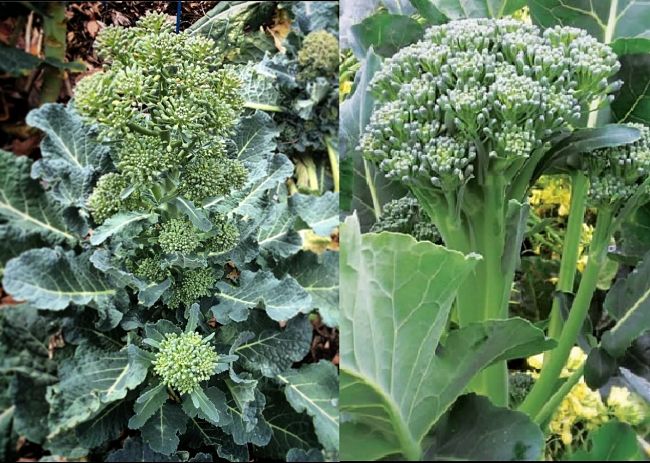Planting and Growing Guide for Brokali (Brassica oleracea)
Description
Brokali is a hybrid cross between broccoli and kailaan (Chinese kale). The stems are softer than those of broccoli. The kale-like leaves are also smaller with curled margins. They have a somewhat nutty flavor and a soft texture like Chinese cabbage stems. Brokali produces tiny yellow flowers, and soft and tender stems. The stems, leaves and small flower clusters are ideal for stir-fry dishes and as a side-dish after steaming or lightly frying. The leaves and stems can also be eaten raw when picked while still small. Once established slice off and harvest the central head. This will help promote side-shoots to grow, increasing the yield. Plants grow up to 50 cm (24 inches) high and are compact, only spreading to about 75 cm (30" inches). Like other brassicas, Brokali does best a fairly heavy, well-drained, slightly alkaline soil. They are prone to the same pests as other brassicas, including aphids and white butterfly.
Planting Guide
Seed Depth: Grow in the ground, or in seed trays for transplanting. Plant seeds about 10 mm (1/2 inch) deep. Plant in rows about 60 cm (24 inches) apart. Seedlings emerge in about 10-15 days.
Space between plants: Thin to 50-60 cm (24 inches) apart once the seedlings appear, or when transplanting.
Harvest Time: Harvest after 7-11 weeks when the shoots are about 25 cm (1 inch thick) just before they begin to flower. Small leaves and shoots can be picked earlier.
Hints:
- Grows best in full sun or half shade
- The seedlings are frost tender
- Grows best in rich, well-drained soil, containing plenty of organic matter
- Feed the plants regularly with fertiliser or compost to keep the plants growing vigorously
- Grow in seed trays and transplant into the garden bed after about 5 weeks, when the seedlings have 4-5 leaves.
- Water frequently and evenly to keep the plants growing steadily as growth checks make the leaves and steams harder.
- Aphids and white butterfly caterpillars are the common pest
- Cover the soil around the plants with compost to help keep the soil moist

Disclaimer: The PlantWhatWhen vegetable planting guide is only designed for use as a very general reference for home gardening purposes. It is not to be used for farming, markets or commercial activities of any kind whatsoever. We take absolutely no responsibility for the accuracy and adequacy of the information provided on this site. We recommend that you consider your local climate, weather patterns and conditions when deciding what and when to plant in your home garden. It's entirely your own decision. Happy Gardening and Best Wishes!